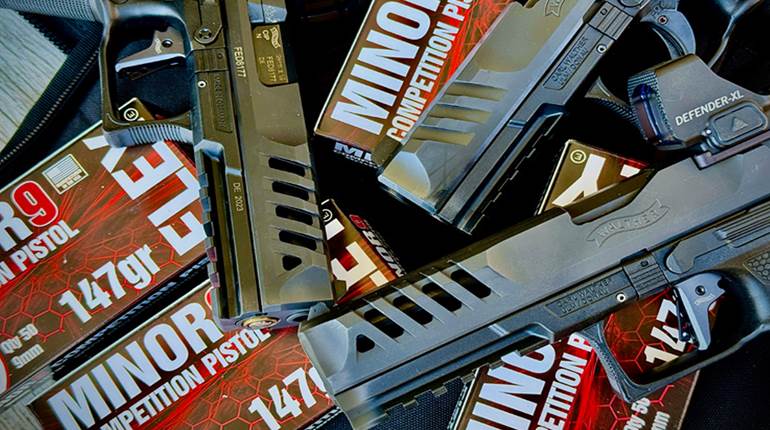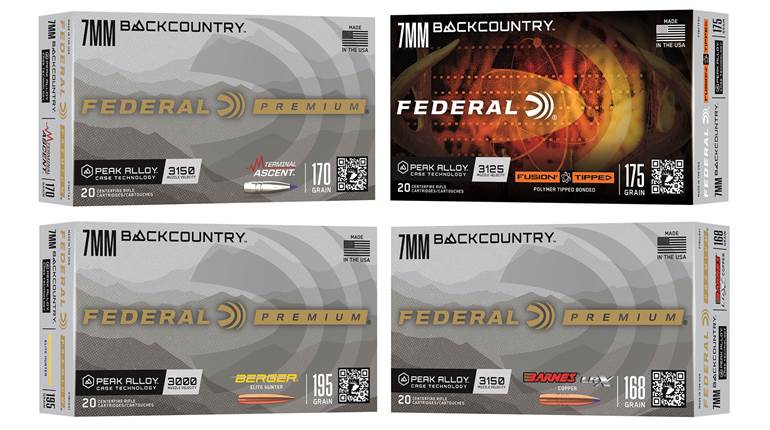
By the mid-1890s, John Browning found himself trapped in a box. The brilliant gun designer was being used and abused financially by Colt and Winchester, which bought every patent he secured just to keep them from the competition. To make matters worse, Colt and Winchester had an agreement to not compete with each other; to wit, Colt would make pistols and not make rifles—especially lever actions—and Winchester would not make pistols.
The companies paid Browning a small fraction of the amount of money his designs produced. Browning was getting taken advantage of, and he knew it. Hart O. Berg was an American-born dealmaker serving as the Director of External Affairs for the then-upstart Fabrique Nationale Herstal (FN) of Belgium. At the time, FN was manufacturing bicycles but wanted very much to be in the arms-making business.
He met with Browning in Hartford, Conn., and the two shared their woes. Browning wanted a portion of the profits for his inventions, and Berg wanted to broker a deal to get FN in the firearm business. Browning showed Berg a prototype for a semi-automatic pistol chambered in a new, .31-cal. cartridge.
Berg returned to Belgium in 1897 with the design, and a deal was made to produce the pistol, the FN M1899, and the new cartridge called the 7.65x17 mm SR Browning (a.k.a. 7.65 mm Browning). We call that cartridge the .32 Automatic Colt Pistol (ACP). As Browning was designing the pistol, he decided that, in order to get the most reliable functioning from a blowback semi-automatic action, the cartridge would have to be straight-walled and have a smaller rim diameter than the case in order to feed from a box-like magazine.
The case wall would have to be thick enough to allow it to index on a ridge machined into the chamber so that it would headspace correctly repeatedly. Just as with most firearm designs, the initial offering is in a relatively low-powered cartridge to demonstrate the worthiness of the design. This same basic cartridge design would be the basis for several other cartridges—the .25 ACP, .380 ACP, 9 mm and .45 ACP, to name just a few.

Both pistol and cartridge were an immediate success. Belgium quickly adopted a slightly altered M1899—designated the M1900—as its military sidearm. During its first decade of manufacture, more than 700,000 copies were made by FN alone. Other countries soon jumped at the 7.65 mm Browning for military and police pistols and have been using it for more than a century.
It remains popular in Europe, but steady encroachment of the 9 mm has been replacing the .32-cal. round. Scores of pistols—everything from single shots to machine pistols—and even a few rifles have been chambered for it. The cartridge was available nearly universally worldwide during the 1950s. The proliferation of the cartridge and guns chambered for it has ensured that it has a significant presence in history.
As we all know, firearms have no will of their own, and something as universally available as pistols in this chambering were regularly used on both sides of the law. Dozens of countries adopted pistols chambered in 7.65 mm Browning as their military sidearm, and even more police agencies adopted it in the early 20th century. It was popular here in the U.S., but not as a police or military pistol. Theodore Roosevelt had an FN M1900 with mother-of-pearl stocks that he carried regularly. The compact pistols were very popular for those needing a bit of protection.
On the other side of the law, a Finnish Nationalist named Eugen Schauman assassinated the Russian Governor-General of Finland, Nikolay Bobrikov, in 1904 with an M1900 pistol. Later, Adolf Hitler it is believed to have used a Walther PPK pistol in 7.65 mm Browning to commit suicide at the end of World War II. Even later, the first firearm produced by then-fledgling Hecker & Koch was the HK 4 pistol in 7.65 mm Browning in 1967. That pistol was quickly adopted by German police agencies, launching Heckler & Koch as a major player on the world firearms stage.
Here in the United States, Colt brought out its 1903 Pocket Hammerless, Savage came out with its Model 1907, and Remington made a rather-slick Model 51 pistol in .32 ACP. Later on Kel-Tec, Seecamp and Taurus brought out several pistols chambered for it. So it is safe to say the .32 ACP or 7.65 mm Browning has gotten around.

Many of today’s shooters sniff at the .32 ACP as a self-defense cartridge, calling it a mouse gun or pipsqueak. However, as one sage is fond of saying, “Nobody likes to get shot with anything.” It’s true that the standard ballistics are a bit of a yawner, a 71 -r. FMJ at 900 fps with 128 ft.-lbs. of energy from a 3.9" barrel. Yet a number of ammunition manufacturers have strengthened this cartridge a bit, sending a 60- to 65-gr. JHP at some 950 to 1,000 f.p.s., adding a handful of energy. Hornady has added the .32 ACP to its Critical Defense line of self-defense ammo featuring a 60-gr. FTX bullet at 1,000 f.p.s.
Nonetheless, for a lot of average citizens who don’t fancy themselves as gunfighters but want something to ward off a bad guy, the .32 ACP in a pocket-sized semi-automatic handgun has been and remains popular.
My grandfather, who was a lumber buyer for the Roy & Titcomb Co., of Nogales, Ariz., about the time Pancho Villa was raising hell in the southwest, carried a 1903 Colt in his coat pocket as he traveled into northern Mexico conducting his business. The family story went that the only time he ever fired it in anger was in the air when he found some miscreant gentlemen from south of the border trying to steal his chickens one night. His house was perhaps about 100 yds. from a four-wire fence that showed where Mexico started.
That little pistol now belongs to me and is pictured in this article. Recently, I was able to find some factory ammo during this ammunition drought and took my family heirloom for a spin. In my 1903 Colt, the Hornady Critical Defense load clocked out at 952 f.p.s., and five shots clustered on the target 5 yds. away at just less than 2". Browning must have had phenomenal vision, because every handgun he designed has sights so small, I find it difficult to see the front sight in the rear notch. If the sight picture were clearer, I am sure the groups would have been smaller.
The .32 ACP is certainly not a hunting cartridge. Although powerful enough for close-range small game, most of the pistols chambered for it lack the practical accuracy to make a humane shot. It is not a target cartridge either. While its inherent accuracy may be good, the pistols chambered for it are small and built for concealment, not for punching out X-rings. At its best, pistols chambered for .32 ACP offer a degree of comfort in the pockets of its carriers.






































